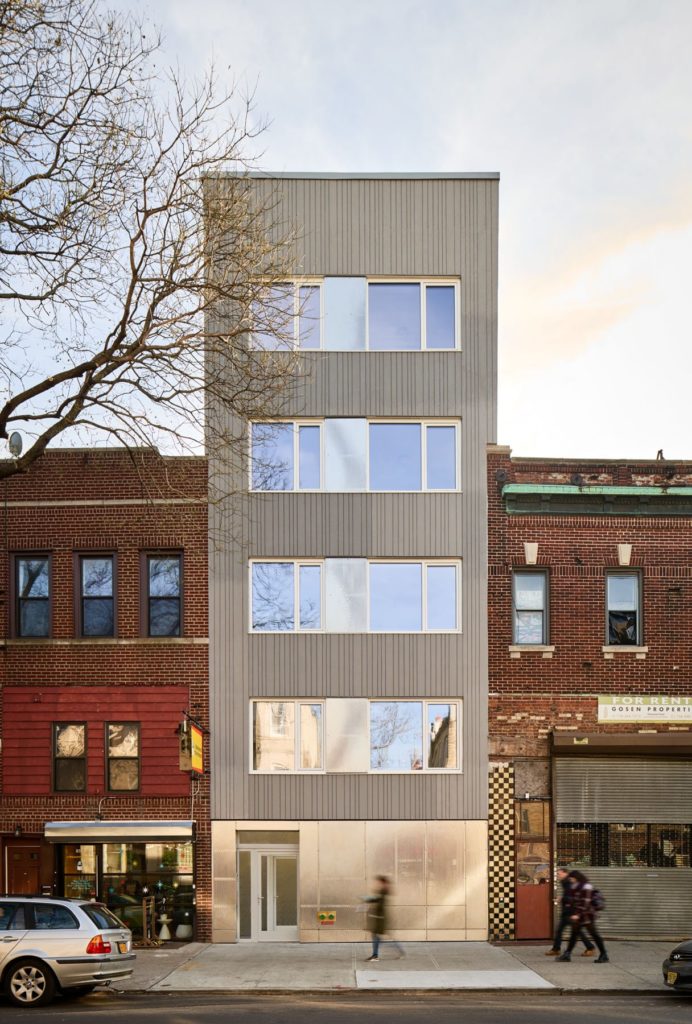This existing mixed use three story building was transformed into a five story 7000 SF Passive House condo building.
A proponent of sustainable construction, the developer of the St. John’s Place project was interested in implementing both low embodied carbon techniques and Passive House strategies in the conversion of an existing commercial building. For this reason, it was decided to adapt the mixed-use three-story building to PH standards rather than demolish and build new.
One of the challenges with adaptive reuse is that you must navigate existing conditions that are less than ideal. At St. John’s Place one obstacle that we faced was a party wall that was only two wythes of brick, this would present structural challenges to adding on top of the building. By using lightweight steel, we were able to navigate this 8” party wall and reuse the existing structure without additional columns or reinforcement of the foundation.
Located at a transition point between single-family townhouses and a busy commercial corridor the street façade needed to be thoughtfully designed to address the change in scale and program. Our solution was to design a custom, stainless-steel perforated rain screen that provides careful control of transparency and light for the first-floor apartment. The use of a more utilitarian material also provides aesthetic transition to the adjacent commercial district. The upper façade is articulated with grooved plaster to provide a textured effect.
Each apartment was design as an open plan to maximized light and views to the landscaped rear yard. The rear façade is outfitted with both thermal bridge free balconies and solar shades to reduce heat gain on the Southern façade. Additional sustainable strategies include high-performance windows, high spec insulation, air sealing, continuous fresh-air ventilation, LED lighting and low-voc materials ultimately delivering comfortable, quiet, and light filled apartments.
This project was a Pilot Project with New York State Energy Research & Development (NYSERDA), who studied the performance of Passive House in relation to NYSERDA’s own energy and building targets. This project was also used as a case study by Passive House International (PHI) in developing a new version of Passive House Classes meant to push performance standards to an even higher benchmark by requiring PH projects to generate power on site.




